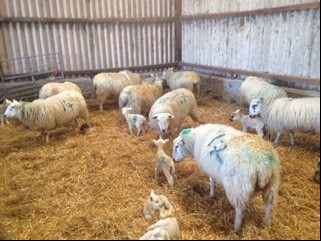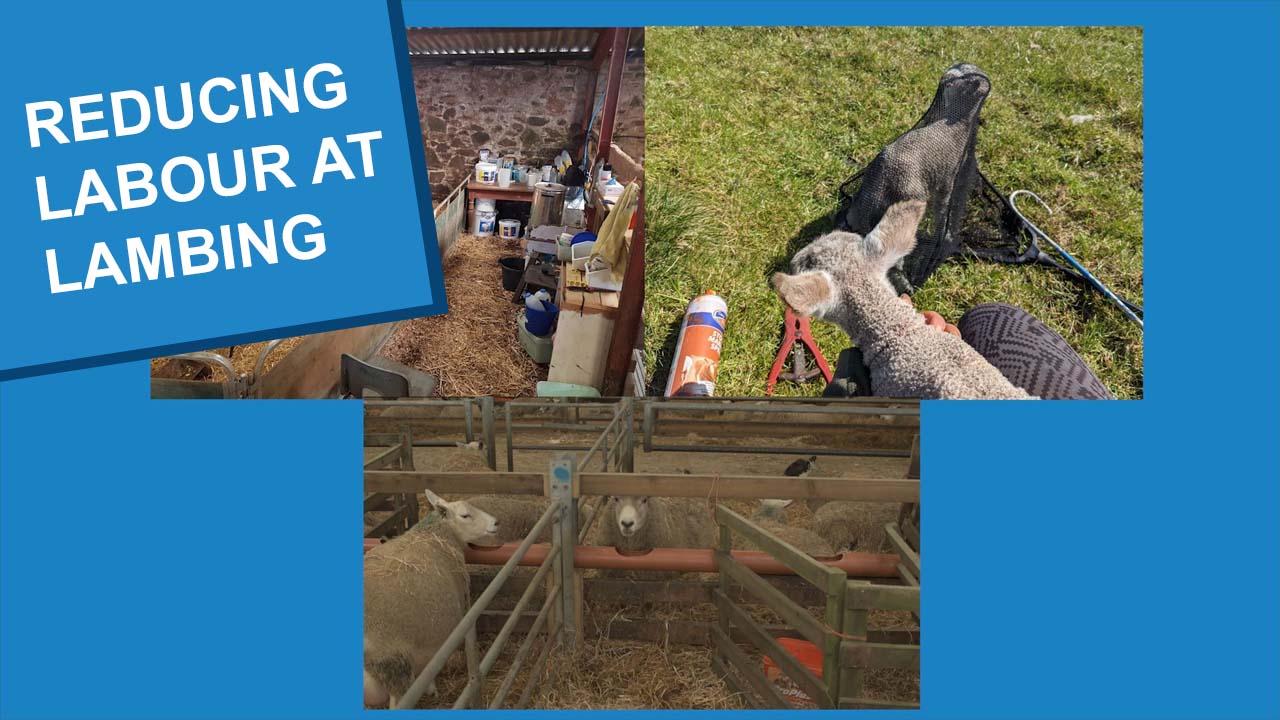Ewes Lambing and Time of Day
1 April 2020In order to reduce staff hours, particularly for those that find themselves short-staffed during this time, some may ask whether we can be more targeted with lambing surveillance by utilising knowledge of when ewes lamb and what influences this.
Most ewes lamb during daylight hours, but management will affect when peaks occur.

Feeding
The evidence in cattle shows that feeding delays calving so feeding late at night (after 6 pm) will reduce night calving (for instance, one study over 1,300 cows on 15 farms in Iowa showed 85% of cows calve between 6 am and 6 pm when fed at dusk). Proposed theories for this effect include rumen contractions affecting uterine contractions and hormonal changes. However, evidence with sheep is less clear; one study demonstrated feeding did have an effect (1): 65% of lambings occurring within 4 h before, and 8 h after feeding – therefore feeding in the morning was recommended. However other studies have not managed to replicate this effect – suggesting the interactions with sheep are more complicated – consider how much management of ewes will vary between farms.
Stress
Another study showed that peak lambing period of housed ewes was unrelated to feeding time or diet but was associated with periods of reduced human activity in the barn (2). This was further demonstrated in SRUC studies where increased stress for one group of sheep (including a negative handling interaction) and saw an increase in night lambing in that group. This makes sense, exposure to stress will result in the ewe deeming that the environment is too stressful to lamb in. Ewes control the timing of birth and sudden acute stress will stop lambing for a short period (e.g. to escape a predator).

So, if we do away with a night lamber, the impact of this on lambing will depend on how stressful the environment is during the day.
With this in mind, we should always seek to:
- Minimise unnecessary handling and disturbance
- Keep stocking density low (at least 1.2m2/ewe)
- Feed at regular intervals – perhaps weight it to more morning feeding than evening feeding, but less than 0.45kg per feed to reduce acidosis risk.
- Minimise interactions with dogs
- Avoid mixing groups too frequently –mixing increases stress
- Provide sufficient feeder space (45cm trough space/ewe and 15cm ad-lib forage space/ewe). Competition = stress.
Stress also reduces the amount of maternal care ewes exhibit, affects the frequency and duration of sucking interactions and can increase lambing difficulty so having a low-stress lambing environment is important to minimise labour in other areas too.
References
1 Gonyou, H. W., and Cobb, A. R. (1986). The influence of time of feeding on the time of parturition in ewes. Canadian Journal of Animal Science 66, 569-74.
2 Hudgens, R. E., Albright, J. L., and Pennington, J. A. (1986). Influence of feeding time and trial on time of parturition in multiparous ewes. Journal of Animal Science 63, 1036-40.
Related Resources
Sign up to the FAS newsletter
Receive updates on news, events and publications from Scotland’s Farm Advisory Service


